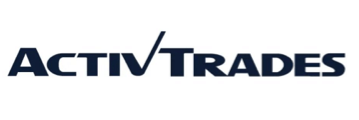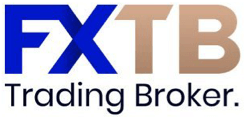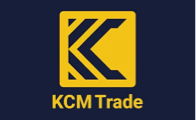4XC (4XCube) is a multi-jurisdiction brokerage brand focused on margin trading via MT4/MT5 and web platforms. For Asian traders who value straightforward pricing, quick onboarding, and broad platform access, 4XC positions itself as a nimble alternative to the bigger legacy names—lean on bureaucracy, heavy on execution and tooling. This review distills how the broker operates, how accounts differ, and what to expect in costs, conditions, and regional suitability for Asia-Pacific retail and semi-professional traders.

Between 60 to 80% of retail CFD accounts lose money.
| Regulators | FSC |
|---|---|
| Minimum Deposit | $50 |
| Leverage | Between 1:30 and 1:500 | Payment Methods | Bank Transfer Visa Mastercard Cryptocurrencies |
At first glance, 4XC markets a simple promise: three account profiles, familiar platforms, and a transparent split between spread-only and raw-spread + commission pricing. The site speaks the language of execution rather than lifestyle branding, which will appeal to traders who care more about platform stability and cost controls than flashy perks. Navigation feels clean; key facts—pricing approach, leverage ceiling, and base currencies—are easy to find. This tone of clarity is valuable in a region like Asia where traders often hop between brokers comparing pennies per lot and fractional milliseconds of latency.
Branding aside, the strongest first impression comes from the account lineup design. Many brokers multiply accounts until choice paralysis sets in; 4XC goes the other way and keeps it to three lanes—Standard (spread-only), Pro (raw + commission), and VIP (raw + lower commission). That structure helps newer traders map a growth path: start with all-in spreads while you learn, migrate into raw pricing when you can quantify slippage, and finally opt into VIP when your size justifies the per-lot fee reduction. It’s methodical and sensible.
Platform coverage is conservative by design—primarily MT4 and MT5 with mobile access. For Asia, where MetaTrader literacy remains high across Indonesia, Malaysia, Thailand, Vietnam, Hong Kong, and Singapore, this is a practical choice. It ensures compatibility with third-party tools (from copy-trade bridges to execution analytics) and maintains a shallow learning curve for traders migrating from other brokers. If you expect a proprietary “all-in-one” suite with built-in social features, you won’t find it here; 4XC opts for the proven MetaTrader stack.
As for positioning, 4XC acknowledges it is not the heaviest regulated “tier-1 everywhere” broker. Instead, it emphasizes operational transparency, audited processes, and a clean fee schedule. For many Asian traders in growth markets who balance convenience with risk appetite, that frank positioning is preferable to marketing hyperbole. The trade-off is clear: you earn pragmatic functionality and lean pricing, but you must also understand the regulatory perimeter and self-impose good risk hygiene.
Regulation
- Cook Islands – Financial Supervisory Commission (FSC): 4xCube Ltd is registered in the Cook Islands and licensed by the FSC (Money-Changing License MC03/2018). The FSC framework governs financial services activities and imposes AML, reporting, and governance standards appropriate to the jurisdiction.
- External Audit: The group discloses independent auditing (e.g., McMillan Woods), which strengthens process integrity and financial reporting credibility beyond the minimum license requirements.
- Risk Disclosures and Client Restrictions: The broker explicitly lists restricted jurisdictions (for example, USA and certain sanctioned countries) and underscores the high risk of leveraged derivatives—good signals for compliance culture and expectation management.
- Operational Transparency: Public legal pages detail group entities, registered addresses, and licensing references. While this is not a substitute for “tier-1” regulatory coverage, it helps clients evaluate governance quality and understand protections available within the chosen jurisdiction.
Bottom line for Asia: 4XC operates under an offshore regulatory model supported by external audits and clear disclosures. Risk-aware users—especially those prioritizing execution tooling and cost—may find that acceptable; highly risk-averse users seeking a MAS/FCA/ASIC-only profile may prefer a different regulatory perimeter. As always, align broker choice with your personal risk framework.
Opening an account — Our Experience
We evaluated 4XC’s onboarding from an Asian IP with standard KYC documents (passport, proof of address). The account creation form is short and avoids jargon; appropriateness questions are focused on experience and objectives without forcing exhaustive essays. Email verification arrives instantly, and the client portal is accessible within minutes. The portal UI is spartan but intuitive: fund/withdraw, create accounts, download platforms, and manage leverage are all a click away.
KYC upload accepts common file formats and supports smartphone photos. OCR is reasonably tolerant of lighting imperfections, provided the image is sharp. In our run, ID approval returned within the same day (in business hours), though timing obviously varies. For traders in Southeast Asia who often operate after work or on weekends, this same-day rhythm is an advantage, limiting lost opportunities when markets are moving.
Funding routes are region-sensitive. Cards and international e-wallets are present, while local rails depend on your country. Asia-based users should expect standard card processing times (instant credit on acceptance) and variable e-wallet settlement. The portal shows fee prompts candidly; where third-party charges may apply, warnings are visible before submission. Withdrawals follow typical compliance checks: request, verify balance/free margin, process to original source. In our test, small withdrawals cleared without friction.
A final onboarding note: leverage selection is configurable per account. Newer traders might be tempted by high ceilings; we recommend starting conservatively and scaling only when your strategy’s distribution and drawdown profile are statistically validated. 4XC’s portal makes it trivial to spin up a second account with different leverage so you can ring-fence experiments without disturbing a live book.
Account Types
| Feature | Standard | Pro | VIP |
|---|---|---|---|
| Pricing Model | Spread-only (no commission) | Raw spreads + commission | Raw spreads + reduced commission |
| Typical/From Spreads | ~1.0 pip (headline) | ~0.0 pip (headline) | ~0.0 pip (headline) |
| Commission (per round lot) | None | ~$5 per round lot | ~$4 per round lot |
| Minimum Deposit | ~$50 | ~$100 | ~$10,000 |
| Minimum Trade Size | 0.01 lot | 0.01 lot | 0.01 lot |
| Max Leverage | Up to 1:500 | Up to 1:500 | Up to 1:500 |
| Base Currencies | USD / EUR / GBP / BRL | USD / EUR / GBP / BRL | USD / EUR / GBP / BRL |
| Intended Profile | Learners / low-frequency | Active traders / EA users | High-volume clients |
Educationally, here’s how to pick. If you are testing discretionary setups at small size and want predictable all-in costs, Standard is the natural start. It removes the cognitive overhead of netting spread and commission. When you begin to measure slippage and you automate parts of execution (EAs, partial fills, multi-ticket scaling), Pro usually reduces total cost of trading because raw spreads compress around liquid times, and the per-lot fee becomes cheaper than the extra spread you’d otherwise pay. VIP is not about status; it’s about economics—once your monthly notional volume increases, shaving that additional dollar per round lot materially affects expectancy.
Across all three, the 0.01 lot minimum and identical leverage ceiling keep behavior consistent when you graduate between accounts. Many traders underestimate how disruptive it is when account migration forces platform or sizing changes; here the operational feel remains familiar while pricing evolves with your skill and size.
Platforms
4XC’s core is MetaTrader 4 and MetaTrader 5 across desktop, web, and mobile. That predictability is a strength in Asia where most education, signal infrastructure, and bot marketplaces revolve around MetaTrader. If you run custom indicators, execution bridges, or copy-trade stacks, the odds they “just work” are high. For a broker that pitches itself as execution-first, that’s exactly what you want: a stack that gets out of the way.
For discretionary traders, MT4’s charting remains adequate, and MT5 adds better multi-asset architecture and faster backtesting. The mobile apps are serviceable for monitoring, manual exits, and quick adjustments—though we always recommend position management from desktop when practical. 4XC’s server list appeared quickly in our tests, and login handshakes were stable through common Asian ISPs.
Algorithmic traders will care about tick integrity, VPS proximity, and throttle limits. While 4XC doesn’t market a proprietary VPS product front and center, third-party VPS connectivity to MT terminals works as usual. If you scalp during Asia-London overlap, measure your execution speed under both Standard and Pro accounts—raw books can display their advantage clearly when spreads collapse into single-digit tenths.
Finally, platform support content is practical: download links, quick-start guides, and funding walkthroughs. It’s not a glossy academy, but the essentials are covered without burying you in pop-ups. For Asia’s multi-device households, this focus on basics—rather than bells and whistles—keeps the learning curve shallow.
Assets
4XC structures its product shelf to cover the mainstream contracts Asian traders actually use for strategy development: major/minor FX, equity indices, metals/energy commodities, and popular single-stock/ETF CFDs. The emphasis is less on listing thousands of obscure lines and more on maintaining consistent pricing on the instruments liquidity providers genuinely quote well during Asian and cross-session hours.
Available Assets
Below you can see which assets are available for trading with 4XC:
| Asset | Availability |
|---|---|
| Currencies | 60 |
| Real Stocks | ✗ |
| Stock CFDs | ✗ |
| Commodities | ✓ |
| Indices | ✗ |
| Real ETFs | ✗ |
| ETFs CFDs | ✗ |
| Futures | ✓ |
| Options | ✗ |
| Bonds | ✗ |
| Cryptocurrency CFDs | ✓ |
| Real Cryptocurrencies | ✗ |
*Availability of certain assets may vary based on account type, platform, or region.
From a portfolio design perspective, this approach encourages discipline. Rather than attempting to trade every micro-cap CFD that suffers from gappy quotes, you are nudged toward liquid, highly observed markets where execution quality is measurable. That’s good pedagogy and good risk control. For Asia-Pacific users, the important detail is how the book behaves across sessions: key FX majors remain tradable through Tokyo/Singapore hours, and index/commodity CFDs align to their underlying exchange trading windows so that spreads and slippage behave predictably.
For hedging, the availability of index and commodity proxies lets you offset sector or currency exposure without FIFO constraints common in some jurisdictions. If you pair trade, make sure your symbols’ contract sizes and tick values are normalized in your strategy so your hedge ratios reflect economic exposure rather than just notional lot counts—a frequent oversight in retail backtests. 4XC’s contract specs page provides the multipliers you need.
Traders in emerging Asian markets often rely on smartphone data and intermittent connectivity. That reality favors higher-quality, lower-count product shelves where price streams are robust. 4XC’s conservative product curation plays into that: fewer, better streams over many, brittle ones. If your strategy truly needs exotic crosses, confirm availability before committing; if not, focusing on liquid majors and indices typically improves expectancy more than instrument novelty does.
In short, the asset strategy is utility-first. It’s designed to keep you trading the instruments where the microstructure is transparent and the teaching signal-to-noise ratio is high. For most Asia-based retail and semi-pro strategies, that’s exactly the right bias.
Spreads
4XC uses a familiar two-track pricing approach: an all-in spread for Standard accounts and a raw-spread + commission model for Pro and VIP. This lets you balance cognitive simplicity (Standard) against net cost precision (Pro/VIP). The right choice depends on your holding time, fill count, and how your strategy’s edge distributes against spread variance.
Spreads Offered
Below a visual representation of 4XC's spreads across several currency pairs:
*Spreads are variable and may change based on market conditions, account types and trading volumes.
Conceptually, spread-only pricing is easier to budget when you enter and exit once or twice per day—you see the all-in cost directly in the chart and need not compute per-lot fees. But as trade frequency rises, raw-spread books tend to win out because the markups compress during liquid intervals, and the fixed commission becomes cheaper than the extra spread you’d have paid. Intraday FX scalpers and EA users often discover a measurable improvement in average price with Pro/VIP once they collect a few hundred tickets of evidence.
Another angle is slippage. With raw pricing, quotes often hug the top of book more tightly. If your strategy relies on limit orders seeking price improvement, or if you partial-fill across ladders, Pro/VIP structures typically deliver more stable micro-fills. Conversely, if you swing trade around macro levels and your fills are less sensitive to tenths of a pip, the simplicity of Standard’s all-in charted cost is attractive.
Asian session realities matter. Liquidity is thinner pre-Tokyo and during lunch lulls; spreads widen naturally across the industry. Evaluate your approach across time buckets: Asia-only, Asia-London overlap, and full London/NY. If your edge lives primarily during Asian open/close, test a month on both Standard and Pro with identical symbols and risk budgets, then keep the one with lower total transaction cost plus slippage. Expect differences to emerge on high-volatility data days (e.g., China PMI, Japan CPI, Singapore GDP).
Finally, avoid chasing headline “from 0.0” figures without context. What matters is your realized average spread during the minutes you actually trade. 4XC’s strength is less the billboard number and more the flexibility to choose the model that matches your statistics—and to switch as your trading evolves.
Other Trading Costs
Beyond spread and commission, the typical derivative costs apply: overnight financing (swaps), conversion charges when your account currency differs from the instrument’s P&L currency, and third-party fees on certain funding methods. 4XC presents these in product specs and funding pages; plan for them in your strategy’s expectancy.
Swap charges are not “penalties”—they reflect interest rate differentials and broker financing of leveraged positions. For Asia-based FX swing traders who hold multi-day, monitor central-bank paths in Japan, Singapore, Australia, and the US; changing rate differentials move your carry materially. If you only scalp intraday, swaps matter less, but be aware of triple-swap days and holiday calendars.
Currency conversion creeps into results when your base currency is different from your instrument’s P&L currency. If you run a SGD or IDR household budget but keep a USD account, your realized trading P&L’s value in local terms also fluctuates with FX. Some traders prefer matching account base currency to their expenditure currency to simplify life; others choose USD for tool compatibility and later convert in chunks. Either way, model the conversion spread in your cost assumptions.
Deposits and withdrawals: 4XC shows warnings where processor fees may apply and adheres to standard anti-money-laundering rules (return to source, etc.). Operationally, plan for cut-off times and bank holidays in both your country and the processor’s. If you run a business account in Asia with monthly cash-out, schedule requests a couple of days before payroll to avoid timing stress.
Trading Conditions
Leverage up to 1:500 is available but should be treated as a ceiling, not a target. For most strategies, sustainable risk falls between 1:10 and 1:50 notionally when you translate position sizing to portfolio drawdown tolerances. 4XC’s flexibility lets you set account-level leverage and enforce discipline. Use position-sizing scripts or MT5 trade guards to keep exposure within statistical bounds rather than emotional ones.
Execution quality depends on your connectivity and order type. Market orders during calm liquidity generally fill within expected slippage bands; during Asia-session data spikes or thin crosses, slippage broadens—as it does across the street. If your strategy requires precise entries, consider limit-only execution with time-in-force rules and accept occasional misses; in backtests, add a realistic “missed trade” rate so your walk-forward mirrors live behavior.
Stop-out and margin call levels exist to protect both client and broker. 4XC publishes these thresholds; build buffers into your risk plan so you don’t discover them mid-volatility. Multi-position traders should model correlated margin expansion: adding positions across instruments that co-move (e.g., USD pairs) increases portfolio VaR more than adding uncorrelated positions.
On the operational side, ticket limits per account (e.g., maximum open/pending orders) are high enough for typical retail and small prop workflows. If you are a grid trader, respect those ceilings and keep your EA’s error handling robust. For discretionary traders, routine hygiene—clearing obsolete pending orders before macro events—prevents avoidable fills and margin spikes.
Is 4XC a Good Option for Asian Traders?
For many Asia-Pacific traders, the answer is “yes—if you value practical execution, MetaTrader familiarity, and simple account logic.” The broker’s design choices align with how the region actually trades: mobile monitoring, desktop execution, MT4/MT5 literacy, and sensitivity to total transaction cost. Add in straightforward onboarding and you have a workflow that supports the after-hours trader building consistency.
Where caution is warranted is regulatory appetite. Some users—particularly in Singapore and Hong Kong—prefer brokers with local or tier-1 licenses (MAS, FCA, ASIC). 4XC’s offshore model with audit backing will satisfy traders comfortable with that perimeter but may not meet the governance threshold of the most conservative clients. This is not a flaw; it’s a profile—choose according to your risk policy.
Strategy fit matters. If you’re a scalper or EA user who values raw pricing and can evidence lower realized costs under Pro/VIP, 4XC’s structure is attractive. If you swing trade major FX or indices a few times per week and prefer all-in simplicity, Standard gets you there without spreadsheet gymnastics. If you run a multi-account portfolio (research/live), the portal’s ease of spinning up isolated accounts is convenient.
From an education lens, 4XC’s narrower, higher-quality product shelf is a feature for Asia’s learning traders. It reduces “choice noise,” pushes you toward liquid symbols, and makes it easier to measure what actually drives edge: entry logic, position sizing, and risk containment. In other words, it’s a broker that encourages craft over spectacle.
Our Verdict
4XC is built for traders who want less ceremony and more control over execution and cost. The three-lane account design is coherent, the platform stack is dependable, and the disclosures are forthright about what the firm is—and isn’t. That honesty, combined with external auditing and tidy operations, will resonate with pragmatic Asian traders.
Its limitations are equally clear: it is not positioning as a multi-tier-1, bank-owned brokerage with expansive research and a proprietary super-platform. If that’s your requirement, look elsewhere. But if you judge brokers by realized spreads, stability of fills, and how quickly you can go from signup to a set of risk-managed tickets, 4XC makes a strong case.
We especially like the migration path from Standard to Pro to VIP. It mirrors the trader’s journey from learning to optimization to scale, without forcing a platform or methodology shift. That continuity reduces friction and keeps cognitive load focused where it belongs—on validating and improving strategy edge.
Final word for Asia: as always, align broker choice with your regulatory comfort and capital safeguards. If an offshore framework with plain-spoken disclosures fits your matrix, 4XC delivers a clean, efficient venue to do the work: craft sound entries, size rationally, control costs, and let compounding—not marketing—tell the story.
Frecuently Asked Questions
Is 4XC regulated and by whom?
4xCube Ltd is registered in the Cook Islands and licensed by the Financial Supervisory Commission (FSC), with independent auditing disclosed. This offshore model is common for brokers focused on global retail access; evaluate it against your personal risk tolerance and local requirements.
Which account should a beginner in Asia choose?
Start with the Standard account to keep pricing simple (spread-only). Once your trade frequency rises and you can measure realized cost, test a Pro account in parallel; if total cost plus slippage drops, migrate. VIP is sensible only when your volume makes the lower commission meaningful.
Does 4XC support algorithmic trading and EAs?
Yes. MT4/MT5 support EAs, custom indicators, and third-party tools. If your strategy is latency-sensitive, colocate via a reputable VPS and benchmark execution during your active session (Asia open, Asia-London overlap, etc.).
How are deposits and withdrawals handled for Asian users?
Cards and common e-wallets are available; local rails depend on country. Expect instant or near-instant credit on cards/e-wallets when approved and standard processing times on withdrawals to the original source, subject to compliance checks.
What is the leverage policy?
Up to 1:500 is available. Treat it as a ceiling. Most sustainable strategies deploy far less leverage when you translate sizing into portfolio drawdown risk. Use separate accounts with different leverage if you run multiple strategies.
What assets are best for Asia-session trading at 4XC?
Liquid majors (e.g., USD/JPY), regionally relevant indices, and metals/energy proxies that align with exchange hours. Focus on instruments with robust depth during your trading window; 4XC’s shelf emphasizes these liquid contracts to keep execution quality measurable.
Note: Any opinions expressed in this article are not to be considered investment advice and are solely those of the authors. Singapore Forex Club is not responsible for any financial decisions based on this article's contents. Readers may use this data for information and educational purposes only.






































































